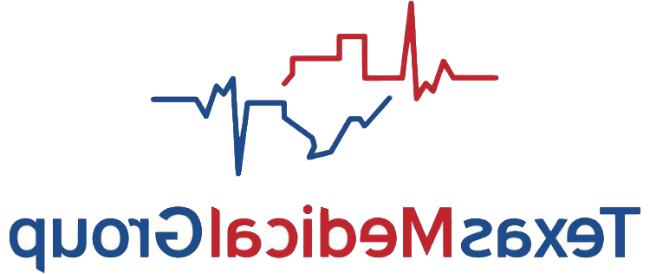
Electronic health records (EHRs) have had a significant impact on documentation processes and workflow patterns in healthcare, but the results have not always been positive. Common complaints associated with EHRs include information overload, administrative burden, usability issues, and disjointed provider–patient encounters. All of these issues contribute to ongoing concerns about patient safety and clinician burnout, particularly as staff shortages and other stressors plague the healthcare industry.1
To help address documentation and clerical burdens, healthcare providers and organizations are increasingly using scribes to help document clinical care. Scribes can be unlicensed, certified, or licensed personnel who provide documentation assistance to
physicians or other licensed healthcare providers.2 Scribes also might assist with EHR navigation, data location and retrieval, coding,
and other activities.
Research suggests that scribes might improve provider satisfaction, boost efficiency and productivity, and help providers interact more
directly with patients, fostering greater trust and patient engagement.3
However, using scribes in healthcare settings requires careful planning and consideration of potential risks. The strategies below can help healthcare providers and organizations develop and implement policies for using scribes to support sound and thorough documentation processes.
- Include information specific to scribes in organizational documentation policies. Make sure policies adhere to state and federal laws, accrediting agency and third-party payer requirements, and professional guidance.
- Develop written job descriptions for scribes that detail required qualifications, experience, and training. Job descriptions and employment contracts also should clearly delineate scribes’ responsibilities, required competencies, and expectations for productivity.
- Make sure scribes are proficient with the organization’s EHR system and have individual security rights to access the system. Healthcare providers should advise scribes about how to respond to EHR alerts and notifications that occur during patient encounters.
- Routinely monitor scribes to ensure they are adhering to the roles and responsibilities defined in their job descriptions and are not practicing beyond the scope of their certification or licensure.*
- Introduce scribes to patients during clinical encounters, and explain their role in documenting care and facilitating better provider–patient interactions and communication. Understand and comply with patients’ right to refuse the presence of scribes in the exam room.
- Review all scribe-generated documentation to ensure accuracy and completeness. Correct any information that is inaccurate or does not thoroughly represent the care provided.
- Include a statement in the documentation that (a) verifies that the treating clinician provided the services that the scribe documented, (b) explains that a scribe (include the scribe’s name) documented the provision of care, and (c) confirms that the clinician reviewed the documentation for accuracy and completeness.
- Provide a signature and date/time to confirm review and approval of all scribe generated documentation. Ensure scribes also sign off on all documentation if required by organizational policy. (Note: Some accrediting agencies and third party payers require scribes to sign documentation.)
- Ensure that review and appropriate signoff of scribe-generated documentation occurs within the timeframe specified in the organization’s documentation policies.
- Provide orientation and ongoing training for scribes; training should cover federal and state privacy regulations, organizational documentation policies/standards, patient rights, etc.
- Routinely assess scribes’ competency and review their performance. Audit scribe-generated documentation for compliance with organizational documentation and privacy/security policies.
- Offer scribes constructive feedback and measurable goals for performance improvement. Consider including key indicators related to scribe functions in organizational quality improvement plans.
- Monitor for changes in federal and state laws, accreditation and payer requirements, and professional guidance related to the appropriate use of scribes for documenting clinical care.
- Ensure healthcare providers know how to independently navigate and operate the EHR system in case a scribe is not available.
Resources
- American College of Emergency Physicians: Scribe FAQ
- American Health Information Management Association: Using Medical Scribes in a Physician Practice
- Family Practice Management: What Can a Scribe Do for You?
- Medscape: How Should 'Scribes' Be Used? Scribes Rules, Explained
- The Joint Commission: Documentation Assistance Provided By Scribes
Endnotes
1 Ziemann, M., Erikson, C., & Krips, M. (2021). The use of medical scribes in primary care settings: A literature synthesis.
Medical Care, 59(Suppl 5), S449–S456. http://doi.org/10.1097/MLR.00...
2 Ibid.
3 Ibid; Gidwani, R., Nguyen, C., Kofoed, A., et al. (2017, September/October). Impact of scribes on physician satisfaction,
patient satisfaction, and charting efficiency: A randomized controlled trial. Annals of Family Medicine, 15(5), 427-433.
doi: 10.1370/afm.2122; Mishra, P., Kiang, J. C., & Grant, R. W. (2018). Association of medical scribes in primary care with
physician workflow and patient Experience. JAMA Internal Medicine,178(11), 1467–1472.
doi:10.1001/jamainternmed.2018.3956; Shultz, C. G., & Holmstrom, H. L. (2015). The use of medical scribes in health
care settings: A systematic review and future directions. Journal of the American Board of Family Medicine, 28(3),
371-381.
This document does not constitute legal or medical advice and should not be construed as rules or establishing a standard of care. Because the facts applicable to your situation may vary, or the laws applicable in your jurisdiction may differ, please contact your attorney or other professional advisors if you have any questions related to your legal or medical obligations or rights, state or federal laws, contract interpretation, or other legal questions.
MedPro Group is the marketing name used to refer to the insurance operations of The Medical Protective Company, Princeton Insurance Company, PLICO, Inc. and MedPro RRG Risk Retention Group. All insurance products are underwritten and administered by these and other Berkshire Hathaway affiliates, including National Fire & Marine Insurance Company. Product availability is based upon business and/or regulatory approval and may differ among companies.
© 2022 MedPro Group Inc. All rights reserved.

Discussion
There are no comments yet.